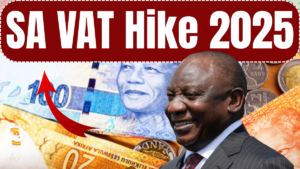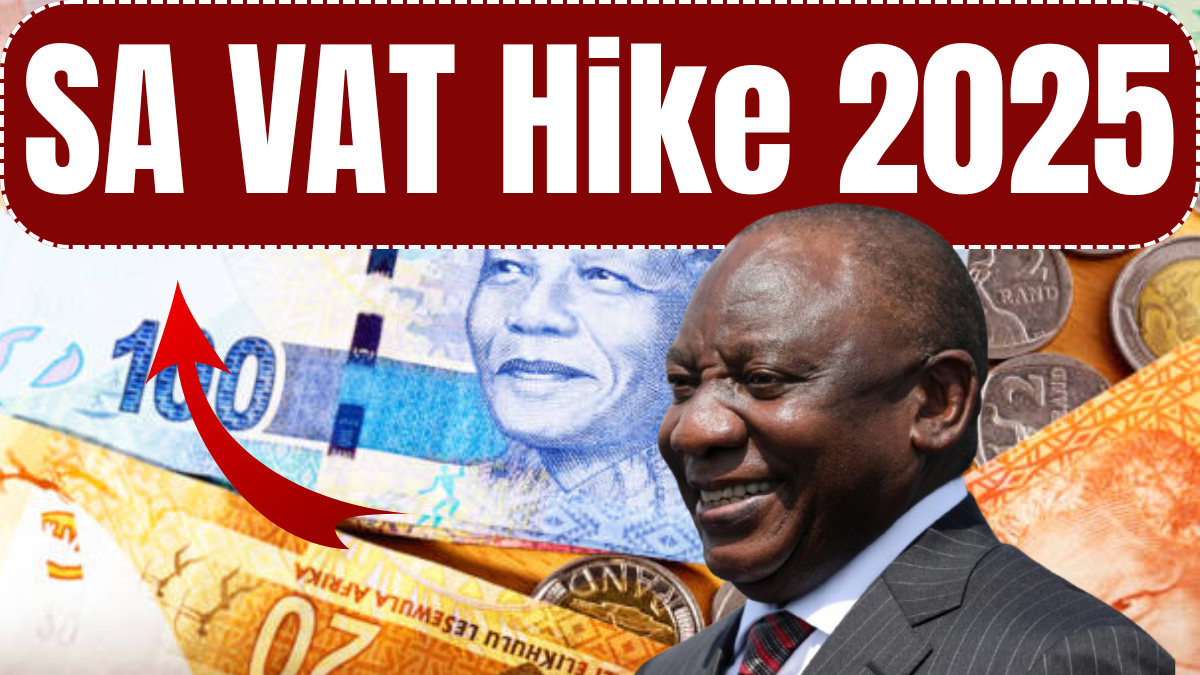South Africa is at an economic crossroads as the proposed Value Added Tax (VAT) hike gains momentum. With rising inflation and widespread financial hardship, the National Treasury’s plan to raise VAT has sparked widespread concern. Citizens, economists, and policymakers are now divided on whether this strategy will aid or harm an already strained population.

Rising Tax Burden Adds to Financial Stress
South Africans already face a web of taxes—ranging from income tax and fuel levies to property rates and excise duties. The proposed VAT increase, set to rise from 15% to 16% over two years, could become another pressure point for working-class households and unemployed citizens who are already navigating daily struggles with food prices, transport costs, and utility bills.
VAT’s Central Role in Revenue Generation
VAT is one of the government’s largest revenue sources, applied broadly across goods and services. Because it’s a consumption tax, any increase impacts nearly every transaction made by ordinary citizens. As opposed to targeted taxes, VAT touches everyone—from households to businesses—and affects both essential and luxury goods unless specific exemptions apply.
Treasury Defends Its Tax Strategy
The National Treasury has justified the increase as a necessary step to close budget gaps and fund essential public services. Finance Minister Enoch Godongwana emphasized that the extra revenue is crucial to maintain infrastructure development, fund social welfare programs, and ensure salaries for public servants. The plan includes a 0.5% increase in 2025/2026 and another 0.5% the following year, pushing VAT to 16% by 2027.
Experts Warn of Harsh Impact on Consumers
Economists are sounding the alarm about the social consequences of raising VAT. Dr. Johann Frederich Kirsten, from the University of Johannesburg, cautioned that the increase would deepen inequality. With South Africa’s unemployment rate high and wage growth stagnant, even a minor VAT adjustment could significantly reduce purchasing power—especially among households earning just above the threshold for state assistance.
Middle-Class in the Line of Fire
The group most at risk is the “missing middle”—those earning too much to qualify for grants but too little to absorb additional living costs. These households often rely on small business incomes, multiple loans, and minimal savings. Since many of the goods they purchase are not VAT-exempt, they would directly feel the impact of higher prices.
Voices from the Community Highlight Real Pain
Dineo Mosinki, a mother of five from Zandspruit, shared how the VAT increase threatens her family’s survival. Dependent on SASSA grants, she worries that higher prices will force her to choose between food and basic household needs. Dineo’s experience reflects the growing tension between policy intentions and public reality on the ground.
Seeking Balance Between Fiscal Health and Economic Recovery
Although the Treasury argues that increased tax revenue is essential, many believe there are better alternatives. Professor Jannie Rossouw of Wits Business School has called for government to reduce spending instead of raising taxes. He pointed to bloated administrative structures, including an oversized Cabinet and underperforming departments, as areas for urgent reform.
Advocating for Growth-Led Recovery
Experts also suggest that instead of tightening the fiscal grip, the focus should shift toward stimulating growth. By boosting employment, supporting small businesses, and investing in skills development, the government can expand the tax base naturally. A healthier economy could generate revenue without disproportionately hurting the most vulnerable citizens.
FAQs
Why is the South African government proposing a VAT increase in May 2025?
The increase is intended to address budget deficits and ensure funding for public services like social grants, infrastructure, and government salaries.
How much will VAT increase under the new plan?
The proposal includes a 0.5% increase in 2025/2026 and another 0.5% the following year, raising VAT from 15% to 16%.
Who will be most affected by this VAT hike?
Low- and middle-income families, especially those who are not eligible for government aid but still face financial strain, will feel the greatest impact.
Will essential goods be exempt from the new VAT rate?
Some items like basic food products remain zero-rated, but many everyday necessities are not exempt, meaning consumers will still face higher prices.
Are there alternative solutions being suggested?
Yes, economists have urged the government to reduce administrative costs and promote economic growth instead of relying on consumption tax increases.
Click here to know more.
Aanchal is a passionate writer with a keen interest in storytelling, content creation, and creative expression. She enjoys exploring diverse topics and crafting engaging narratives that captivate readers.

